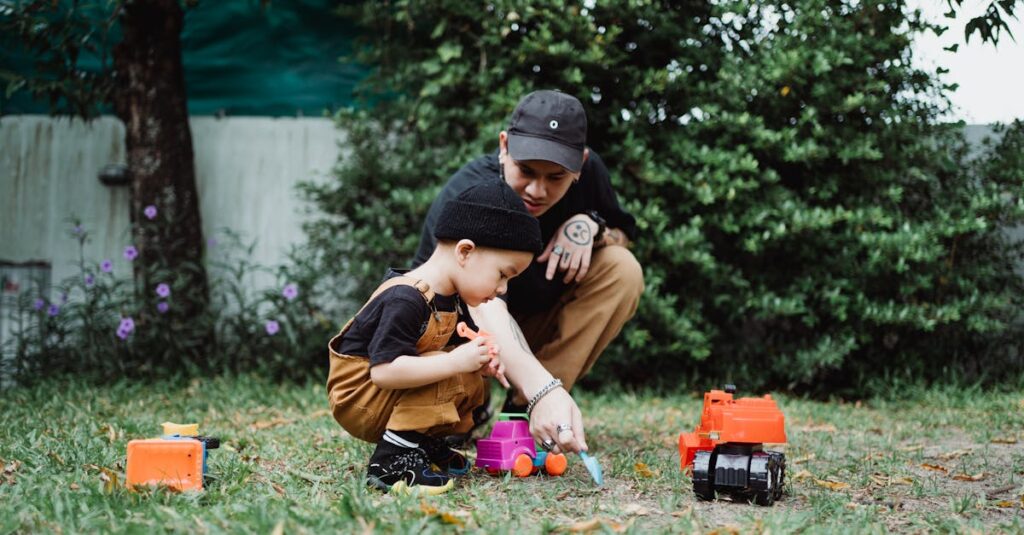Understanding Forgiveness in Little Minds
Understanding forgiveness can be tricky for preschoolers—they often hold onto slights like I hold onto the last slice of pizza. Imagine explaining why sharing is caring to a three-foot-tall tornado with marshmallow hands!
Preschoolers react more to feelings but lack the vocabulary to express them. You might think they’re more into building blocks than repairing relationships, and you’re right. But we can teach them skills to navigate their mini social worlds.
Creating Safe Spaces for Learning
Children need safe spaces to learn that forgiveness heals more than boo-boos. With love, patience, and a sprinkle of creativity, you’ll see them become forgiving mini-humans. By understanding how their minds work, you prepare for joyous tantrum management. Remember, laughter always helps. What’s a preschool without giggles after all?
Key Points to Remember:
- Forgiveness can be taught even at a young age.
- Preschoolers express emotions differently due to their limited vocabulary.
- Providing a safe environment encourages healing and sharing.
- Incorporate fun and humor in the learning process.
To visualize the journey through forgiveness, here’s an uplifting image:
With nurturing guidance, children can become adept at managing relationships, paving the way for a brighter, more harmonious future.
The Power of Social Stories
Social stories are like GPS for preschoolers’ feelings. They guide kids through emotional traffic jams like a trusty map to a treasure chest. These simple narratives illustrate common social dilemmas and reveal empathy’s magic door.
Crafting Relatable Narratives
Crafting these stories with your child makes it more relatable—and fun. For example:
Scenario:
Jimmy accidentally knocks over Sarah’s block tower. Instead of a toy apocalypse, use a story to show how Jimmy can apologize. End with Sarah’s forgiving hug or high-five.
The Impact of Social Stories
These tales embed themselves in young minds, encouraging kind behaviors like seeds planted in soft soil. Over time, they’ll see forgiveness not as a task, but as a superpower.
Adding a Touch of Humor
Sprinkle stories with humor and watch them blossom.
Visual Aids: A Picture Perfect Approach
Visual aids are preschoolers’ secret weapons against emotional confusion. They’re like fun wallpapers for the mind, helping kids decode feelings just as they’d decipher their favorite cartoon. Use picture charts or emotion cards to illustrate forgiveness in action.
Pictures of a frowning face turning into a smile can convey more than a thousand words for a three-year-old. Alongside stories, these images form a dynamically engaging duo. They add vivid color to abstract concepts, placing forgiveness as an achievable next step—in bright crayon lines.
By using visual aids, you’ll help them see forgiveness as a joy, not a chore. Plus, they double up as handy artwork for the fridge!
Turning Emotional Challenges into Opportunities
Navigating preschoolers’ emotions is like herding hyperactive cats. They feel everything so intensely, from anger to joy, often in less time than it takes you to finish your morning coffee. One minute they’re mad, and the next riding rainbows of happiness!
Emotional challenges can crop up like uninvited guests at a party, turning playtime into minefields. Use these moments as teaching opportunities. Here are a few strategies to help guide your little ones through their emotional ups and downs:
- Encourage deep breaths (ranking just below naptime in importance).
- Model calmness during emotional storms.
- Discuss feelings openly when the storm has passed.
- Validate their frustrations while gently steering them towards making up.
It shows them that forgiveness isn’t denial, but healing. Celebrate these little victories!
Fun Activities to Practice Forgiveness
Teaching forgiveness doesn’t mean turning preschoolers into little saints overnight. Instead, engage them in fun activities like role-playing or crafts. Here are some ideas to help children understand and practice forgiveness:
- Forgiveness Circle: Create a ‘forgiveness circle’ activity where each child shares a moment they forgave someone.
- Creative Rewards: Reward creativity with colorful stickers while they participate in these activities.
These activities redefine forgiveness as an interactive dance—a happy step forward, not a dreaded walk of shame. With each game, their understanding matures, wrapped in giggles and friendship.
Be prepared for parental pride moments when those lessons echo back at you during playdates. It’s not just a lesson; it’s a family fun time that forges lasting bonds and giggles.
Share Your Forgiveness Stories
You’ve taught your child the ABCs of forgiveness, now it’s time for show-and-tell! I invite you to share stories of forgiveness you’ve encountered with your preschooler. Was there a moment they forgave their teddy bear for being left out in the rain, or a sibling after a toy tussle?
Sharing stories builds a community of parents who laugh, share, and learn from each other. It also gives us all new ideas for tackling those daily loveable chaos bombs our kids love to throw.
Remember, each personal story is like a guiding light for others. Let’s make forgiveness a family affair and have a chuckle or two while we’re at it!

